Have you ever wondered why Japan does not have palace dramas that centered on the imperial court power struggle (television and film) when the country is the oldest monarchy in the world?
Compared to South Korea and China which don't have existing imperial families, and yet regularly produced costume films and series about palace intrigues, Japan has a reigning imperial family.
 |
| Japan's reigning imperial family, from left: Empress Masako, Emperor Naruhito, and their only child, Princess Aiko |
So why the Japanese filmmakers are not producing palace-themed films or television series? Is it prohibited in the country? Well, we are not certain, but the most logical reason for this is perhaps due to the political situation of Japan during the old times, specifically before the Meiji Restoration in 1867.
For several centuries, Japan was under feudalism where the powerful leaders and rulers of the country were feudal lords and samurai clans, and the emperors were merely regarded as puppets. So there were no big things happening in the imperial court, the real power struggles were in the daimyo territories and the samurai clans.
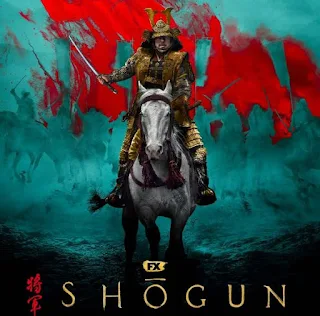 |
| Shogun miniseries produced by FX network, the latest historical drama to depict the power of the samurai warriors in Japan |
In the 12th century, the Shogunate began, and Japan was under the military government. The head of the Shogunate was called the Shogun, which was appointed by the emperor.
The Shoguns have vassals called daimyo or feudal lords, and all of them came from the Samurai clans (Japan's aristocracy) that lorded over Japan's provinces.
That's why most of Japan's historical films are centered on shoguns and samurai warriors, and not on emperors or the imperial courts.
While the government power in Korea and China during the old times was held by their kings and emperors, Japan's government power during the old days was held by shoguns and daimyo.
To understand the political climate of old Japan better, here's an overview of their feudalism period, the rise of the samurai clans, the power of shogun and daimyo, and the shogunate era.
Overview of Japan's monarchy and feudalism
Japan is the world's oldest continuous monarchy. Its imperial court dates back to the 4th century BC. But the term "emperor" was not used until the 7th century, and based on the sequence of order of the list of their emperors, the first recognized emperor of Japan was Jimmu from the Yamato dynasty, who apparently ruled Japan between 660 BC to 585 BC.
 |
| Princess Aiko of Japan wears Kimono at her college graduation last month (March 2024). She's the only child of the reigning Japanese emperor, Naruhito |
 |
| Princess Aiko visited the tomb of Emperor Jimmu in Nara to pay offerings for her college graduation. Japanese royals deeply revered their ancestors |
Although his existence is presumed to be just a legend, Jimmu (his posthumous name) has been recognized as the first Japanese ruler who used the term emperor.
This theory was based on the Nihon Shoki or The Chronicles of Japan, the second-oldest book of classical Japanese history, which seems to legitimize the existence of the Yamato dynasty founded by Jimmu.
Most names of the emperors listed in the order of rulers in Japanese imperial history before the Meiji restoration were presumed to be just legends because of the lack of historical evidence about their existence.
But the current emperor, Naruhito, who ascended to the Japanese throne in 2019 following the abdication of his father, Emperor Akihito, is listed as the 126th emperor of Japan based on the traditional order of succession from Emperor Jimmu, which means that Japanese history recognized all those legendary emperors as real people.
Emperor Naruhito, who turned 64 in February this year, is the great-great-grandson of Emperor Meiji (the Japanese ruler who abolished the Shogunate in the 19th century).
The powerful samurai clans
However, Japanese emperors in the past were presumed to be powerless and just merely figureheads. The real powerful people were the samurai clans, particularly the shoguns and the daimyo lords.
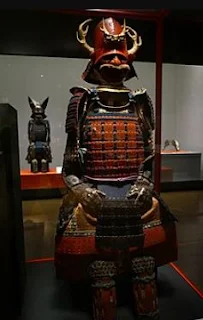 |
| Samurai armor of Toyotomi Hideyori |
Shoguns were the real rulers during Japan's feudalism period but they were appointed by emperors. Daimyo refers to the feudal lords (in Europe, equivalent in rank to Duke, Count (Earl in Britain), and Baron), who are vassals of the shoguns. Shoguns and daimyo both came from the samurai clans. No commoners or people with a peasant background have ever held the title of Shogun.
The Samurai clans were the aristocratic and noble families of Japan in the old times until they were abolished in the middle of the 19th century during the Meiji Restoration. These titles and the offices they held were hereditary and could be passed only to their male descendants. The Shoguns were considered the de facto rulers of the country rather than the emperors.
Shogunate
The shogunate was the hereditary military government of Japan, spanning from 1192 to 1867. It is headed by the shogun appointed by the emperor. Shoguns had daimyo lords as vassals, these feudal lords owned vast domains in Japan, and as their domains/territories increased, so with their power.
There are three recognized periods of Shogunate in Japan:
1. Kamakura Shogunate (1192–1333). Founded by Minamoto no Yoritomo. The Kamakura shōguns were members of the Minamoto clan until 1226, followed by the Fujiwara clan until 1252, and the last six were minor princes of the imperial family.
The Kamakura shogunate was overthrown in the Kenmu Restoration under Emperor Go-Daigo in 1333. The emperor re-established authority/government power in the imperial court but it was only short-lived.
2. Ashikaga Shogunate (1336-1573). In 1336, Ashikaga Takauji and his vassals overthrew the imperial government and founded the Ashikaga shogunate. They descended from the samurai clan of Minamoto and were said to be descendants of Emperor Seiwa, the 56th emperor of Japan.
However, the constant political struggle and civil wars in the country during this period saw the rise to power of the feudal lords, known as daimyo. One of these powerful daimyo lords from the Oda samurai clan was Oda Nobunaga, who overthrew the last Shogun of the Ashikaga Shogunate in 1573.
There is much debate on why the Ashikaga shogunate collapsed, but according to historical facts, the main reason for its demise and defeat was due to its weak stronghold.
Unlike its predecessor, the Kamakura shogunate, or its successor, the Tokugawa shogunate, the founder of the Ashikaga shogunate had little personal territory to support his rule.
Thus, the Ashikaga shogunate heavily relied on the personal authority of its shōgun. It was made worse when they adopted a de-centralized daimyōs system (local feudal lords), which allowed the powerful daimyō to rise into power.
Oda Nobunaga was the head of the powerful samurai clan, Oda, and during the weak period of the Ashikaga Shogunate, he launched a war against other daimyō to unify Japan, emerging as the most powerful daimyō during his time. However, after the Ashikaga Shogunate was abolished in 1573, there was no Shogunate established.
Between 1573 and 1603, Japan was under the rule of three powerful daimyo, Oda Nobunaga, Toyotomi Hideyoshi, and Tokugawa Ieyasu, they were called, the three Great Unifiers of Japan.
See below the background of their leadership:
The Rise of Japan's Three Great Unifiers
a. Oda Nobunaga
In the Shogun miniseries, this is the prototype character of Lord Kuroda Nobuhisa, the former daimyo who was killed by Akechi Jinsai, the father of Mariko. He was only shown in flashbacks because the story of the Shogun miniseries began after his death.
After he overthrew the last shogun of the Ashikaga Shogunate, Nobunaga, became the leader and the reformist of the civil government, but he was not titled shogun, thus, his office was not called shogunate.
Although Nobunaga was considered the most powerful political figure in Japan during the Sengoku period (the period of intense political unrest and civil wars in Japanese history), he did not become a shogun. He died before he could be granted the title.
His great ambition was to unify the provinces and fiefdoms of Japan into a single territory where he would be the ultimate ruler, but he was assassinated before he could complete his goal.
During the Siege of Takamatsu in 1582, Oda Nobunaga and his eldest son and heir, Nobutada, were killed in the Honnō-ji incident by the forces of the traitor, Akechi Mitsuhide. The assassination ended Nobunaga's quest to consolidate Japan under his authority.
Note: In the Shogun miniseries, Akechi Mitsuhide is the prototype of the character, Akechi Jinsai, the father of Mariko who betrayed and killed Lord Kuroda (prototype of Oda Nobunaga), tarnishing his family's legacy.
b. Toyotomi Hideyoshi (1537-1598)
In the Shogun miniseries, this is the prototype of the character of Nakamura Hidetoshi, later the Taikō, who established the Council of Regents for his young son.
One of Nobunaga's retainers/vassals, Toyotomi Hideyoshi, sought vengeance over Nobunaga's death and launched an attack against Mitsuhide's forces.
He defeated Mitsuhide during the Battle of Yamazaki. Hideyoshi then assumed the authority and power left by Nobunaga. He also continued Oda Nobunaga's vision to unite the whole of Japan under one authority./rule.
However, just like his master (Nobunaga), Hideyoshi too was not granted the title of shogun by the emperor. Instead, he was made the Chancellor of the Realm.
There are many theories on why Hideyoshi was not made a shogun despite his achievements. One of these theories pointed to the circumstances of his birth. He was not born into the samurai clan and thus considered a commoner/peasant.
His rise to power began when he worked for Oda Nobunaga. He was made a daimyo (which was rare considering his peasant bloodline) due to his many victorious military campaigns during Nobunaga's time.
However, the title Shogun could only be inherited or granted to a person born in the samurai/imperial bloodline.
In 1582, Hideyoshi began the construction of Osaka Castle, which was built on the site of the temple Ishiyama Hongan-ji. It was completed in 1597 and became the last stronghold of the Toyotomi clan.
After a brief conflict with Tokugawa Ieyasu, one of Oda Nobunaga's vassals and the head of the Matsudaira samurai clan, the two made peace and became allies.
Hideyoshi was made imperial regent by the imperial court and later Chancellor of the Realm, which was the highest official position and title in the nobility class.
He was the first person in history to become a Kampaku or imperial regent, who was not of noble blood. He then passed the position and title of Kampaku to his nephew, Toyotomi Hidetsugu, but remained in power as Taikō (meaning retired Kampaku/imperial regent).
Despite his failing health, Hideyoshi still planned to gain some accomplishments to solidify his legacy. So he continued Oda Nobunaga's dream of a Japanese conquest of China. He launched his campaign to invade China, which was under the Ming dynasty, by way of Korea during the Joseon dynasty.
Hideyoshi had been communicating with the Koreans since 1587, requesting a passage for his plan to invade China.
However, the Joseon dynasty was an ally of China's Ming dynasty so the Joseon government refused Hideyoshi's demand of the passage. Moreover, the Joseon government feared the potential security risk in case the two troops clashed on Korean soil.
So Hideyoshi prepared for a Korean invasion, and in 1592, he dispatched the Japanese troops to the Korean peninsula and Seoul easily fell.
Within months, the Japanese troops occupied Korea and the Joseon king, Seonjo, escaped and requested military support from China. A year later, the Wanli Emperor of the Ming dynasty sent his imperial army to block the planned Japanese invasion and help recapture the Korean peninsula.
At the end of the first campaign, Japan's entire navy was destroyed by the Korean forces. This, in effect, put an end to Japan's dream of conquering China as the Koreans simply destroyed Japan's ability to resupply their troops.
In 1593, Hideyoshi's second son was born and to avoid a succession dispute with his nephew, Toyotomi Hidetsugu, whom he appointed a year earlier, he ordered the latter to commit suicide, he also murdered members of his nephew's family and their supporters.
In 1598, Hideyoshi renewed his earlier ambition to invade Korea and China. He dispatched the Japanese troops again to the Korean peninsula. He also sent his commanders to Korea to supervise the campaign, but all efforts were unsuccessful as Koreans continued to resist.
Around this time, Hideyoshi fell ill, so he decided to form a Council of Regents to ensure his son, who was then five years old, could continue his rule.
He appointed powerful daimyo lords as members of the Council of Five Elders (a topic tackled in the Shogun miniseries also): Tokugawa Ieyasu, Chikuzen, Terumoto, Kagekatsu, and Hideie.
Apart from the Council of Elders, Hideyoshi also formed Five Commissioners to oversee the business of the realm: Asano Nagamasa, Mashita Nagamori, Ishida Mitsunari, Natsuka Masaie, and Maeda Gen'i.
Tokugawa Ieyasu is the prototype of Lord Yoshii Toranaga and Ishida Mitsunari is the prototype of Ishido in the Shogun miniseries. However, in the series, Ishido appeared as one of the Council of Regents.
Tokugawa Ieyasu was the most powerful among the Council of Regents. He had strong domains to back his authority. Eventually, his increasing power in the Council sowed jealousy among his peers, especially Ishida Mitsunari. A jealousy that would evolve into a heated conflict that would determine their fate, and the future of Japan.
In September 1598, Hideyoshi died, but the members of the Council of Regents kept his death a secret to avoid putting the lives of the Japanese troops in Korea in danger. They ordered the Japanese troops first in Korea to withdraw and return home before they made Hideyoshi's death public.
c. Tokugawa Ieyasu (1543 - 1616)
This is the prototype of the character of Lord Yosii Toranaga in the Shogun miniseries played by Japanese veteran actor, Hiroyuki Sanada.
 |
| Hiroyuki Sanada as Yoshii Toranaga |
He was born in Okazaki Castle in 1543. Originally named Matsudaira Takechiyo, he was the son of Matsudaira Hirotada, the daimyo of Mikawa of the Matsudaira clan, and Odai no Kata, the daughter of a neighboring samurai lord, Mizuno Tadamasa. They descended from the Minamoto samurai clan, the same bloodline as the Kamakura and the Ashikaga Shoguns.
As Oda Nobuhide, the father of Oda Nobunaga, continued to attack Okazaki, Hirotada turned to his powerful eastern daimyo neighbor, Imagawa Yoshimoto, for assistance. Yoshimoto agreed to an alliance under the condition that Hirotada send his young heir, Takechiyo, to his domain as a hostage.
Oda Nobuhide learned of this arrangement so he abducted Takechiyo, who was then five years old. Oda Nobuhide threatened to execute Takechiyo if Hirotada wouldn't sever his ties with the Imagawa clan.
Despite the danger faced by his young son, Hirotada flatly refused, stating that sacrificing his own son would show the seriousness of his pact with the Imagawa clan.
But amidst this refusal, Nobuhide spared the young boy's life. He kept Takechiyo in his domain. It was at this point that Takechiyo became acquainted with Nobuhide's son, Oda Nobunaga.
Later, Takechiyo's father, Hirotada, was murdered by his own vassals about the same time, Oda Nobuhide died during an epidemic.
Years later, an army from the Imagawa clan, attacked the castle where Oda Nobuhiro, Nobuhide's illegitimate son, was living. His brother, Oda Nobunaga, negotiated his release by giving Takechiyo to the Imagawa clan.
So Takechiyo, who was then nine years old, was taken hostage by the Imagawa clan but was treated nicely in the hope that the Matsudaira clan would become an ally of the Imagawa clan.
Takechiyo spent his childhood and teenage years with the Imagawa clan. Later, he succeeded his father as daimyo and head of the Matsudaira clan, he also changed his name to Ieyasu.
After the death of Imagawa Yoshimoto, Ieyasu allied with Oda Nobunaga. It was under Nobunaga's guidance that Takechiyo began his rise to power, winning several military campaigns.
He concentrated on reforming the Matsudaira clan and later became the master of all of the Mikawa Province. After he grew his territories and his authority, he changed his name to Tokugawa Ieyasu.
Around this time, he became one of the powerful daimyo lords. Following the assassination of Oda Nobunaga, he became a threat to another Nobunaga's subordinate, Toyotomi Hideyoshi. It would take years of battles before they became allies.
Realizing that he could gain more when he allied with Ieyasu, due to Ieyasu's brilliance and power, Toyotomi Hideyoshi began seeing Ieyasu as a comrade and ally rather than an enemy.
Around this time, Hideyoshi assumed the title of Taiko or retired imperial regent (but still yielded substantial power and authority in the realm). He appointed Ieyasu one of the five Council of Elders to assist his young son, Hideyori.
A year after the death of Hideyoshi, Ieyasu led an army to take over Osaka Castle, to rule under the name of the young Hideyori. Reportedly, this was due to Hideyoshi's wish that Ieyasu would preside over the regency more than the other Elders.
This increasing power of Ieyasu angered the other members of the Council of Elders and plans were made on all sides for war to destroy Ieyasu. His strongest opponent, however, was not from the Council of Regents but from Five Commissioners, Ishida Mitsunari, who plotted Ieyasu's assassination.
In the Shogun miniseries, Ishida Mitsunari is the prototype of the character of Ishido Kazunari (played by Takehiro Hira), a former peasant turned powerful bushō, one of the five Regents, Toranaga's chief rival, and ruler of Osaka Castle.
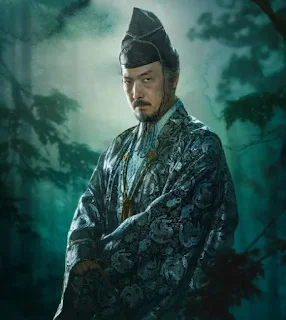 |
| Takehiro Hira played Ishido Kazunari in Shogun (2024) |
Months later, the two forces locked horns and met at Sekigahara (a town located in the Fuwa district) for their final battle to settle scores.
The Battle of Sekigahara was the biggest and one of the most important battles in Japanese feudal history, which would also be highlighted in the Shogun miniseries in the upcoming episodes (perhaps in episode 8 or 9).
It began on October 21, 1600. Just six months after English navigator, William Adams was shipwrecked in the coastal area of Japan in April 1600 and was held a prisoner. Adams is the prototype of the character of John Blackthorne in the Shogun miniseries.
 |
| Cosmo Jarvis played John Blackthorne in Shogun |
During the battle, Ishida Mitsunari decided to abandon his post to march to Sekigahara. However, it proved to be a disaster for Ishida. Despite the tactical advantages of his Western Army, Ieyasu was a master military strategist who always showed brilliance in all his decision-making.
Before the war began, he had already been in contact with many of the daimyo in the Western Army, promising them additional domains and leniency after the battle, should they switch sides with him.
As a result, the Battle of Sekigahara ended with a complete Tokugawa victory. Aware of his defeat, Ishida Mitsunari sought to escape but was caught by villagers. He was beheaded in Kyoto.
Immediately after the victory at Sekigahara, Ieyasu redistributed the lands he promised to the daimyo who served him. The result of the battle was disastrous to the young Hideyori who lost most of his territories, which were under the Western daimyo lords. Without a stronghold and vast domains, the future of the young boy was put in limbo.
3, Tokugawa Shogunate (1603-1867)
After his victory, Ieyasu worked to unify Japan into a single rule by consolidating other territories. On March 24, 1603, Tokugawa Ieyasu received the title of Shōgun from Emperor Go-Yōzei. He was then 60 years old and had outlasted all the other great men of his time. He also earned the reputation of one of the Great Unifiers of Japan.
 |
| Lord Yoshii Toranaga played by Hiroyuki Sanada in Shogun miniseries |
As Shōgun, he used his remaining years to create and solidify the Tokugawa shogunate, which ushered in the Edo period, becoming the third shogunal government in Japan. Three years later in 1605, Shōgun Ieyasu abdicated, and he was replaced by his third son, Tokugawa Hidetada.
The Tokugawa shogunate would rule Japan for the next 260 years, until 1867 when the last shogun of the Tokugawa clan resigned during the Meiji Restoration. Japan then evolved into an empire that lasted until today.
After Retirement
However, despite his retirement, Ieyasu, acting as the retired shōgun, remained the effective ruler of Japan. He supervised the building of Edo Castle, a massive construction project that would become the largest castle in all of Japan. Today, the Imperial Palace in Tokyo where the current imperial family lived, stands on the site of the former Edo Castle.
 |
| Above: Edo Castle that Ieyasu built. Below: It's now where the current Imperial Palace in Tokyo stood |
Ieyasu also supervised diplomatic affairs between Japan and The Netherlands, Spain, and England, but kept Japan away from the influence of Europe.
From 1605 until his death, Ieyasu made William Adams, his close diplomatic and trade advisor. Unable to go back home, Adams trained to become a samurai under Ieyasu who presented him with two swords representing the authority of a samurai.
 |
| William Adams and Tokugawa Ieyasu are the prototype of the characters John Blackthorne and Yoshii Toranaga in Shogun (2024) |
Adams also received the title, hatamoto (bannerman), a high-prestige position as a direct retainer/vassal in the shōgun's court. He was provided with generous revenues.
Later, William Adams assisted the shogunate in negotiating trading relations and became the most influential Western samurai during Ieyasu's time. Adams also became the official interpreter of the Tokugawa shogunate. He died in 1620 without ever returning to England.
In 1616, Tokugawa Ieyasu died at the age of 73. He was posthumously named Tōshō Daigongen, meaning the "Great Gongen, Light of the East". (A Gongen is believed to be a Buddha who has appeared on Earth in the shape of a kami to save sentient beings.
Qualities of Tokugawa Ieyasu
He had many qualities that enabled him to rise to power. He was both careful and bold—at the right time. He was wise, calculating, and subtle, he knew how to put his best foot forward. He was considered a master political strategist.
He switched alliances when he thought he would benefit from the change. He was not well-liked nor personally popular, but he was feared and respected for his leadership. He was capable of great loyalty and gave rewards to those who were deserving.
Unlike Toyotomi Hideyoshi, he harbored no desire to invade territories outside Japan, particularly Korea and China. He only wanted to bring order and an end to open warfare and to unite and rule Japan.
Ieyasu's favorite pastime was falconry (this was shown in the Shogun series). He regarded it as excellent training for a warrior.
Tokugawa shogunate era (also called the Edo period) saw Japan in a more peaceful political climate compared to the previous centuries. Warfare and territorial conflicts were rare after Ieyasu took control. Samurai clans became bureaucrats rather than warriors.
End of Shogunate in Japan
The 15th and last shogun of the Tokugawa shogunate was Tokugawa Yoshinobu (1837 – 1913). In 1867, following his failure to modernize the samurai army and the navy, and after most samurai clans sided with the Meiji emperor, he tendered his resignation as shogun. It was the result of his unsuccessful campaign to get the support of other daimyo and samurai to introduce reforms.
His resignation ushered the return of authority and government power into the imperial court, effectively ending the shogunate period in Japan. He went into retirement in 1868 and largely avoided the public for the rest of his life. Japan then evolved into an empire.
 |
| Tokugawa Yoshinobu, the last Shogun in the history of Japan. He was made a Prince by Emperor Meiji after his resignation. |
Yoshinobu had offspring who married into the imperial family. His daughter, Tsuneko Tokugawa (1882–1939) married Prince Fushimi Hiroyasu, a second cousin to both Emperor Hirohito and Empress Kōjun. While his granddaughter, Kikuko Tokugawa married Prince Takamatsu, the brother of Emperor Hirohito, to become Princess Takamatsu.
In 1902, Emperor Meiji allowed Yoshinobu to re-establish his own house as a Tokugawa branch with the highest rank in the peerage, granting him the title of prince. This honor was due to his loyal service to Japan. He took a seat in the House of Peers. He resigned in 1910 and died three years later.
The Meiji government gradually abolished the entire class of samurai and the power they held, integrating them into the Japanese professional, military, and business classes.
However, they still maintain a distinct social (aristocratic) class, separate from the commoners or ordinary citizens.
In 1947, following the government reform and the transition of Japan into the constitutional monarchy (where the emperor is only the head of state and the head of the government is the prime minister), the entire social class system of the samurai and the Japanese aristocracy/nobility was effectively abolished. Japan's social class system now only recognized the imperial family as the country's bluebloods.
The Samurai Town of Kanazawa
If you plan to visit Japan, try to explore Kanazawa, this is known as a place to learn about the rich Samurai history.
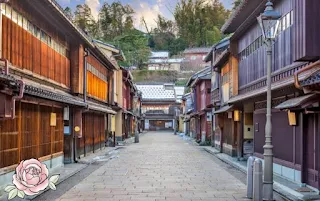 |
| Samurai town in Kanazawa |
The former seat of the Maeda Clan during the Edo Period, Kanzawa is one of the largest cities in Japan. It comprises a samurai district (Nagamachi), geisha districts (Nishi Chaya and Higashi Chaya) and a castle town (Kanazawa Castle).
Asking if there are still samurai clans in Japan today. Yes, they have descendants, but they don't hold power anymore, they're treated now as ordinary citizens and having regular jobs or have businesses.
But while the traditional samurai class no longer exists, the samurai spirit is still part of the Japanese culture.









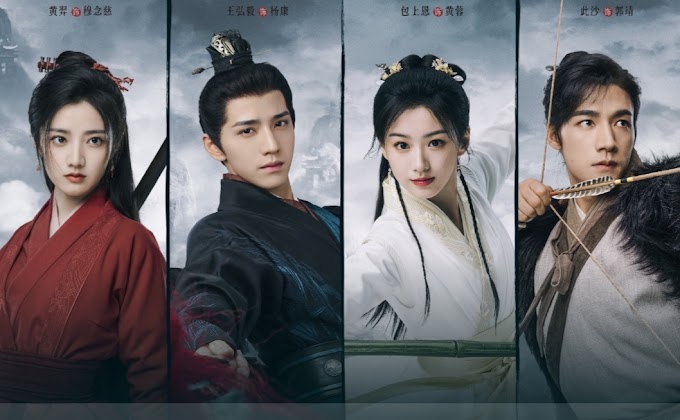



0 Comments